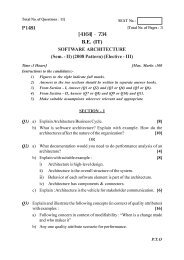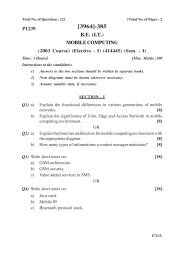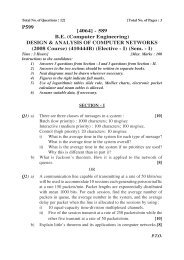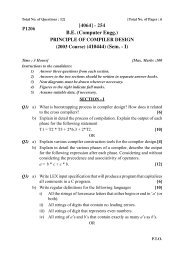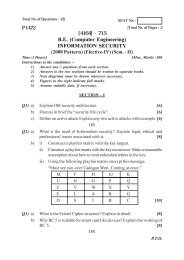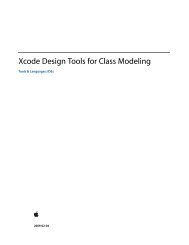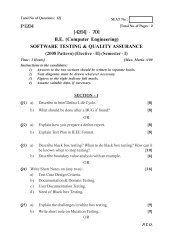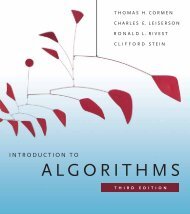Cloud Computing and SOA Convergence in Your Enterprise: A Step ...
Cloud Computing and SOA Convergence in Your Enterprise: A Step ...
Cloud Computing and SOA Convergence in Your Enterprise: A Step ...
You also want an ePaper? Increase the reach of your titles
YUMPU automatically turns print PDFs into web optimized ePapers that Google loves.
10 Chapter 1 Where We Are, How We Got Here, <strong>and</strong> How to Fix It<br />
Note that cloud software takes full advantage of the cloud paradigm by<br />
be<strong>in</strong>g service oriented with a focus on statelessness, low coupl<strong>in</strong>g, modularity,<br />
<strong>and</strong> semantic <strong>in</strong>teroperability. 1 However, all cloud comput<strong>in</strong>g approaches<br />
are not the same, <strong>and</strong> several deployment models, while different,<br />
are still considered cloud comput<strong>in</strong>g:<br />
Private cloud. The cloud <strong>in</strong>frastructure is owned or leased by a s<strong>in</strong>gle organization<br />
<strong>and</strong> is operated solely for that organization.<br />
Community cloud. The cloud <strong>in</strong>frastructure is shared by several organizations<br />
<strong>and</strong> supports a specific community that has shared concerns (e.g.,<br />
mission, security requirements, policy, <strong>and</strong> compliance considerations).<br />
Public cloud. The cloud <strong>in</strong>frastructure is owned by an organization sell<strong>in</strong>g<br />
cloud services to the general public or to a large <strong>in</strong>dustry group.<br />
Hybrid cloud. The cloud <strong>in</strong>frastructure is a composition of two or more<br />
clouds (<strong>in</strong>ternal, community, or public) that rema<strong>in</strong> unique entities but<br />
are bound together by st<strong>and</strong>ardized or proprietary technology that enables<br />
data <strong>and</strong> application portability (e.g., cloud burst<strong>in</strong>g).<br />
Each deployment model <strong>in</strong>stance has one of two types: <strong>in</strong>ternal or external.<br />
Internal clouds reside with<strong>in</strong> an organization’s network security perimeter,<br />
<strong>and</strong> external clouds reside outside the same perimeter. For the purposes of<br />
this book, we focus primarily on public cloud comput<strong>in</strong>g, or the use of a public<br />
cloud provider or providers to host portions of our <strong>SOA</strong>. Many bus<strong>in</strong>esses<br />
will f<strong>in</strong>d that private clouds are a better solution for their situation, leverag<strong>in</strong>g<br />
the benefits of cloud comput<strong>in</strong>g but with<strong>in</strong> their firewall. Or, they may choose<br />
to leverage a mixture of public <strong>and</strong> private clouds, or a hybrid cloud. F<strong>in</strong>ally,<br />
some may create semiprivate or community clouds, which are public clouds<br />
leveraged only by a closed group of companies or government agencies.<br />
The message is that it is all cloud comput<strong>in</strong>g <strong>and</strong> all of these architectural<br />
options are available to you. The steps highlighted <strong>in</strong> this book are applicable<br />
to private, community, <strong>and</strong> hybrid cloud comput<strong>in</strong>g 2 as well as to public<br />
cloud comput<strong>in</strong>g. We cover private clouds <strong>in</strong> a bit more detail <strong>in</strong> Chapter 12,<br />
“Mov<strong>in</strong>g Onward.”<br />
1. http://csrc.nist.gov/groups/SNS/cloud-comput<strong>in</strong>g/<strong>in</strong>dex.html<br />
2. Ibid.



